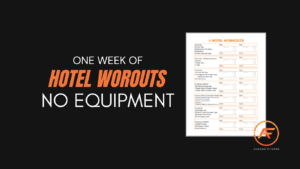Jet Lag Recovery: How Fitness and Movement Can Help You Adjust Faster
Traveling across multiple time zones can wreak havoc on your body’s internal clock, leaving you feeling groggy, disoriented, and fatigued. Fortunately, one of the most effective ways to combat jet lag is through intentional fitness and movement. Here’s how exercise helps reset your circadian rhythm, along with practical tips for incorporating stretching, mobility drills, and light workouts into your jet lag recovery routine.

How Exercise Helps Reset Your Internal Clock
Exercise is a powerful regulator of your circadian rhythm—the natural cycle that dictates when you feel awake or sleepy. Physical activity triggers the release of hormones and neurotransmitters such as serotonin, dopamine, and cortisol, helping your body recalibrate to local time. Exposure to natural light during workouts further reinforces this adjustment by signaling your brain to align its sleep-wake cycle with the current time zone.
Stretching and Mobility Drills to Ease Jet Lag
After hours spent in cramped airplane seats, your muscles are often tight and sore, contributing to feelings of sluggishness. Gentle stretching and targeted mobility exercises can dramatically improve your comfort and energy levels.
- Hamstring and Hip Stretches: These relieve tension in your lower back and legs, helping your body relax and reducing discomfort after a long flight.
- Shoulder and Neck Rolls: Loosen tension built up from sitting, and promote better posture, enhancing circulation.
- Spinal Twists: Aid in realigning your spine and easing stiffness in your torso, which helps stimulate your body’s relaxation response.
Light Workouts to Combat Fatigue
The goal immediately after travel isn’t to push yourself into high-intensity training but rather to engage in moderate, low-impact activities that boost energy without causing additional strain. Get a light sweat going but you don’t need to crush yourself.
- Walking or Light Jogging: Taking a brisk walk or a gentle jog outside helps boost blood flow and exposes you to sunlight, further syncing your internal clock.
- Yoga or Pilates: Both focus on controlled movements and breathing, making them perfect for rejuvenating your body and mind post-travel.
- Bodyweight Exercises: Simple routines like squats, lunges, and push-ups can stimulate your muscles and cardiovascular system without overwhelming your already stressed body.
Sample Jet Lag Recovery Workout Routine
Here’s a simple, effective 15-minute workout routine to help you quickly bounce back:
Dynamic Warm-Up (3 minutes):
- Neck and shoulder rolls
- Arm circles
- Leg swings
Gentle Mobility Drills (5 minutes):
- Cat-Cow stretch (10 reps)
- Hip circles (10 reps each direction)
- Thoracic rotations (8 reps per side)
Light Strength Circuit (5 minutes):
- Bodyweight squats (15 reps)
- Walking lunges (10 reps each leg)
- Push-ups or modified push-ups (10-15 reps)
Cooldown and Stretching (2 minutes):
- Seated hamstring stretch
- Reclined spinal twist
Want a week of hotel workouts? Download a PDF here!

Nutrition Tips to Enhance Jet Lag Recovery
Nutrition is a critical component in managing jet lag. Here are key dietary tips:
- Stay Hydrated: Drink plenty of water before, during, and after your flight to combat dehydration, a common cause of fatigue.
- Eat Light, Balanced Meals: Avoid heavy, greasy foods that can slow digestion and exacerbate fatigue. Choose lean proteins, healthy fats, and complex carbohydrates for sustained energy.
- Boost Melatonin Naturally: Include melatonin-rich foods like cherries, bananas, oats, and almonds to naturally promote restful sleep and faster circadian alignment.
- Limit Caffeine and Alcohol: While caffeine may initially boost energy, it can disrupt sleep patterns. Alcohol further dehydrates your body and negatively affects sleep quality.
Re-Cap: Practical Jet Lag Fitness Tips
- Prioritize Morning Exercise: Engaging in physical activity early in the day can rapidly align your internal clock with the local schedule.
- Stay Hydrated: Proper hydration enhances your workout effectiveness and helps flush out toxins accumulated during travel.
- Consistency Over Intensity: It’s better to maintain regular, lighter exercise sessions rather than attempting a single, strenuous workout immediately after arrival.
Jet lag doesn’t have to spoil your travel adventures. By integrating strategic stretching, mobility drills, and gentle workouts into your post-flight routine, you can significantly reduce recovery time and feel energized to fully enjoy your destination. Keep moving, stay active, and let fitness be your ally in overcoming jet lag.
Your next great adventure is just one energized step away!